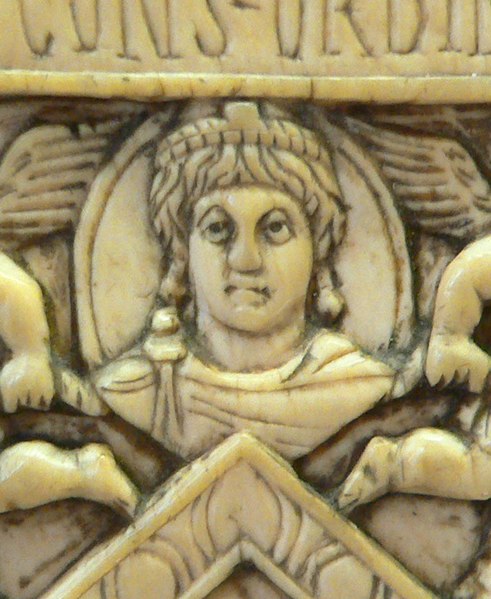Justin I, also called Justin the Thracian, was Eastern Roman emperor from 518 to 527. Born to a peasant family, he rose through the ranks of the army to become commander of the imperial guard and when Emperor Anastasius died, he out-maneouvered his rivals and was elected as his successor, in spite of being around 68 years old. His reign is significant for the founding of the Justinian dynasty that included his eminent nephew, Justinian I, and three succeeding emperors. His consort was Empress Euphemia.
Solidus of Justin I marked: d·n· iustinus p·p· aug·
Justin I (left) persecuting Monophysites, miniature from the 12th century Manasses Chronicle
Solidus depicting Justin and Justinian.
Image: Mosaic of Justinianus I Basilica San Vitale (Ravenna)
Anastasius I Dicorus was Eastern Roman emperor from 491 to 518. A career civil servant, he came to the throne at the age of 61 after being chosen by the wife of his predecessor, Zeno. His reign was characterised by reforms and improvements in the empire's government, finances, economy and bureaucracy. He is noted for leaving the empire with a stable government, reinvigorated monetary economy and a sizeable budget surplus, which allowed the empire to pursue more ambitious policies under his successors, most notably Justinian I. Since many of Anastasius' reforms proved long-lasting, his influence over the empire endured for many centuries.
Anastasius I on a consular diptych, AD 517
The Barberini ivory, a 6th-century ivory diptych representing either Anastasius or Justinian I
Anastasius I (center) alongside his wife Ariadne (right) on the consular diptych of his grandnephew Sabinianus Anastasius (AD 517). The third figure may be the co-consul Agapitus.
A gold solidus of Anastasius I








